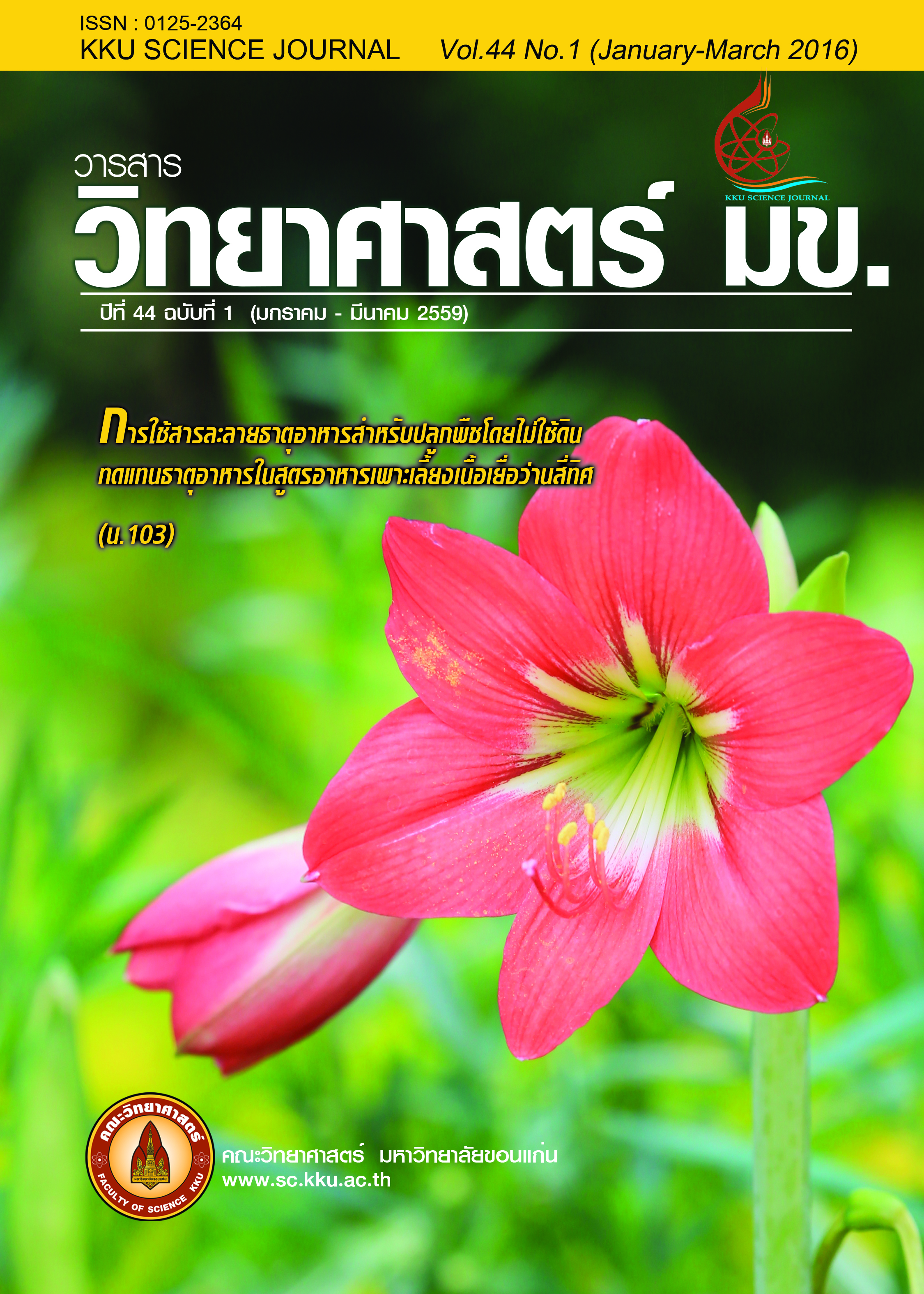Utilization of Sericin on Water Mold Growth Inhibition and Serum Substitution in cell culture
Main Article Content
Abstract
Sericin is a natural adhesive protein to attach fibroin fiber in silk cocoons which is removed during raw silk production. In this study, Sericin protein was extracted from cocoons of two varieties of silkworm (Bombyx mori L.); Nang Noi Srisaket and UB1, by three methods including 1) boiling in 1.2% citric acid, 2) boiling in distilled water and 3) heating in 8 M urea containing 2% β-mercaptoethanol at 80 oC. Sericin powder was then prepared from boiling in 1.2% citric acid method. The protein patterns from these methods were assayed by SDS-PAGE. The potential of sericin in inhibiting the growth of water mold (Saprolegnia diclina) was
investigated by soaking water mold hyphae in various sericin concentrations and timings before transfer to GY agar. Furthermore, the ability of sericin in serum replacement in A549 human lung alveolar cell culture was investigated. The results on SDS-PAGE showed the molecular weight of sericin ranged from 5 to 116 kDa. The pretreatment S. diclina hyphae in sericin solution was able
to decrease the density and/or the length of water mold mycelium. Those hyphae immersed in 3% of UB1 sericin solution for 120 minutes was significantly inhibited hyphae growth rate (p<0.05) comparing to the control group soaked in distilled water. Moreover, the results of A549 human lung alveolar cell culture indicated that after 72 hrs, cells grown on 0.5% sericin fromNang Noi Srisaket and UB1 provided the highest numbers of viable cells which were 2.75 x 104 and 2.5 x 104 cells/ml, respectively similar to those cultured on 10% FBS with x 104 cells/ml. Therefore, sericin is an alternative potential antifungal substance and serum replacement agent.
Article Details

This work is licensed under a Creative Commons Attribution-NonCommercial-NoDerivatives 4.0 International License.


